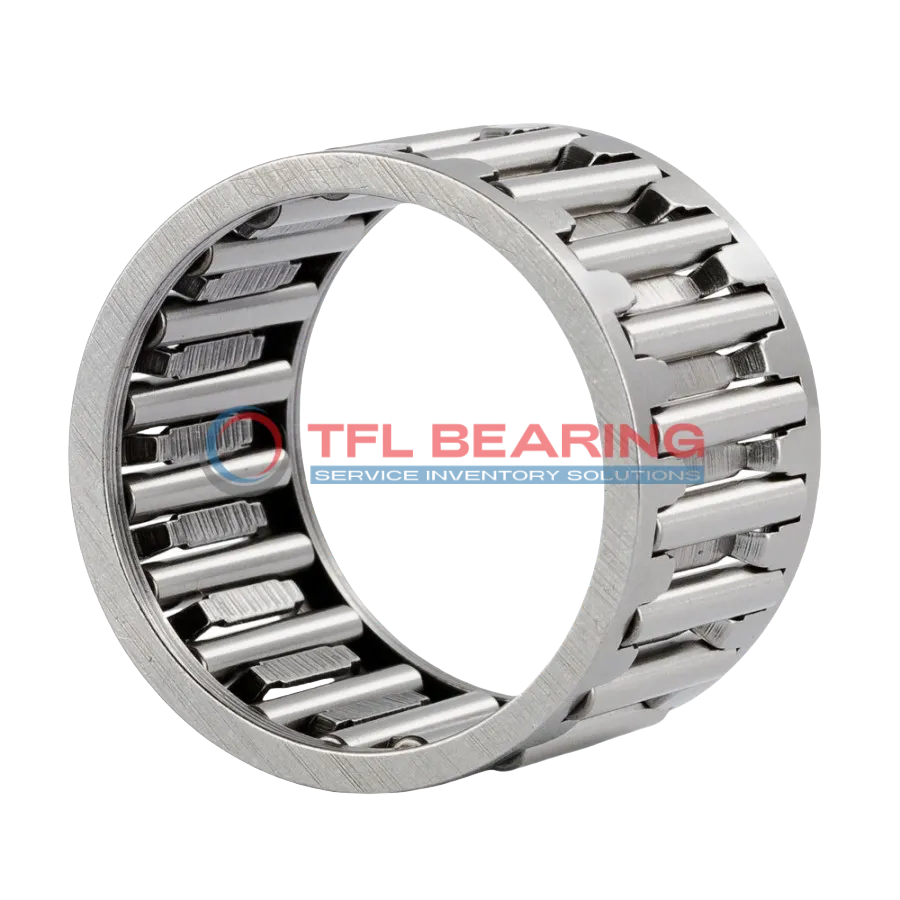
The K16X22X20 is a needle roller and cage assembly with a 16mm bore and 22mm outer diameter, crafted from sturdy steel. It handles radial loads up to 4118 lbf and spins smoothly at speeds up to 22900 RPM.
Its single-row construction with a steel cage ensures durability and efficient performance. The compact design, just 20mm wide, makes it easy to fit into tight spaces.
This assembly is interchangeable with INA bearings, offering a reliable replacement option. Ideal for applications like gearboxes, pumps, or small machinery where high-speed rotation is needed.
Weighing only 17g, it’s lightweight yet robust. Compliant with RoHS standards, it operates well in temperatures from -30°C to 110°C.
"*" indicates required fields
How Does K16X22X20 Bearing Achieve High-Speed Performance?
K16X22X20 Bearing features a steel cage and needles, ensuring durability and smooth operation at high speeds.
Its dynamic radial load capacity of 4118 lbf makes it suitable for demanding applications.
The compact design allows it to handle speeds up to 22,900 rpm without compromising performance.
With a temperature range of -30° to 110°C, it performs reliably in various conditions.
Why Choose K16X22X20 Bearing for Precision Tasks?
K16X22X20 Bearing’s single-row needle roller design provides precise load distribution and reduced friction.
The steel construction ensures high static radial load capacity of 5130 lbf for stability.
Its lightweight design at just 17 g makes it ideal for applications where weight matters.
The bearing operates efficiently within a wide temperature range, ensuring versatility.
Engineered for Reliability: K16X22X20 Bearing
K16X22X20 Bearing is built with high-quality steel needles and cage for long-lasting performance.
It supports dynamic radial loads up to 4118 lbf, making it reliable in heavy-duty use.
The bearing’s compact dimensions (16x22x20 mm) allow for easy integration into tight spaces.
With RoHS compliance, it meets environmental standards without sacrificing performance.
Steel vs Ceramic Bearings: Strengths of K16X22X20 Bearing
K16X22X20 Bearing uses steel needles and cage, offering a balance of strength and cost-effectiveness.
Its high-speed capability of 22,900 rpm makes it suitable for fast-moving applications.
The bearing’s static radial load capacity of 5130 lbf ensures stability under pressure.
Designed for metric systems, it is interchangeable with INA bearings for convenience.
Key Fields for K16X22X20 Bearing
K16X22X20 Bearing is widely used in industrial gearboxes, where its compact design and high load capacity make it ideal for tight spaces. The steel needle rollers ensure smooth operation even under heavy radial loads.
In automotive applications, K16X22X20 Bearing fits perfectly in transmission systems, providing reliable performance at high speeds. Its metric dimensions make it a common choice for European car models.
For automation equipment, K16X22X20 Bearing supports precise movements in robotic arms and conveyor systems. The single-row construction simplifies installation and maintenance.
Where Is K16X22X20 Bearing Used?
You’ll often find K16X22X20 Bearing in electric motors, where its high-speed capability and durability are essential. The steel cage adds extra strength for long-term use.
In household appliances like washing machines, K16X22X20 Bearing ensures quiet and efficient operation. Its lightweight design helps reduce overall energy consumption.
Built for Heavy-Duty Use: K16X22X20 Bearing
K16X22X20 Bearing handles tough conditions in construction machinery, such as excavators and cranes. The dynamic radial load rating ensures it can withstand constant stress.
For medical devices like dental drills, K16X22X20 Bearing offers precision and reliability. The temperature range makes it suitable for sterilisation processes.
Automotive vs Aerospace: Applications of K16X22X20 Bearing
In cars, K16X22X20 Bearing is commonly used in steering systems, where its compact size is a big advantage. The high rpm rating suits performance vehicles well.
For aerospace applications, K16X22X20 Bearing’s lightweight construction is beneficial in auxiliary systems. However, it’s more frequently seen in ground support equipment.
"*" indicates required fields